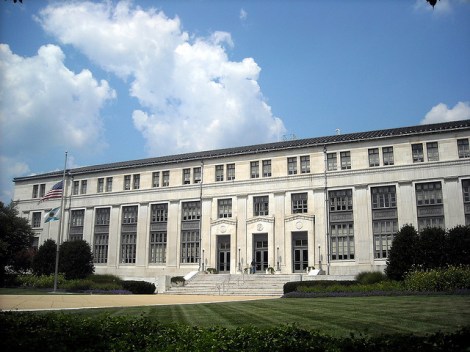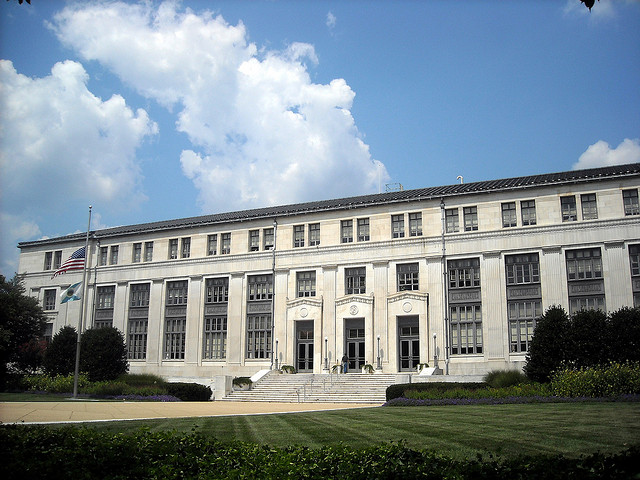
ncindcA nondescript government office building.
The U.S. Government Accountability Office is basically the definition of bureaucracy. It is bureaucrats on bureaucrats on bureaucrats, probably organized into an Excel-like matrix of desks. The GAO will not order lunch before assembling 14 accountants to do an overview of the competing economics.
This morning, it released a 275-page report (short, by its standards) in its “High-Risk Series,” addressing the main economic risks the government faces. It’s an update to the agency’s 2011 offering, noting that two problems cited then (interagency contracting, IRS modernization) are no longer high risks. You know what does pose a high risk to the government’s fiscal health? Climate change. From the report [PDF]:
This year, GAO has added two areas.
• Limiting the Federal Government’s Fiscal Exposure by Better Managing Climate Change Risks. Climate change creates significant financial risks for the federal government, which owns extensive infrastructure, such as defense installations; insures property through the National Flood Insurance Program; and provides emergency aid in response to natural disasters. The federal government is not well positioned to address the fiscal exposure presented by climate change, and needs a government wide strategic approach with strong leadership to manage related risks.
• Mitigating Gaps in Weather Satellite Data. Potential gaps in environmental satellite data beginning as early as 2014 and lasting as long as 53 months have led to concerns that future weather forecasts and warnings—including warnings of extreme events such as hurricanes, storm surges, and floods—will be less accurate and timely. A number of decisions are needed to ensure contingency and continuity plans can be implemented effectively. [Ed. – We’ve covered this before.]
That “managing climate change risks” wasn’t seen as high risk in 2011 is a little alarming, but then, the GAO isn’t known for leaping into action.
There’s a reason the GAO calls the issue high-risk: The government’s efforts to combat it have been haphazard.
In 2009, we recommended that the appropriate entities within the Executive Office of the President develop a strategic plan to guide the nation’s efforts to adapt to climate change, including the establishment of clear roles, responsibilities, and working relationships among federal, state, and local governments. In September 2012, we recommended, among other things, that FEMA develop a methodology to more accurately assess a jurisdiction’s capability to respond to and recover from a disaster without federal assistance. FEMA concurred with this recommendation. Some actions have subsequently been taken, including the development of an interagency climate change adaptation task force. However, a 2012 NRC report states that while the task force has convened representatives of relevant agencies and programs, it has no mechanisms for making or enforcing important decisions and priorities.
In May 2011, we found no coherent strategic government-wide approach to climate change funding and that federal officials do not have a shared understanding of strategic government-wide priorities.
This, the GAO suggests, should be fixed. How? See pages 72 to 74. Improve insurance programs, offer assistance to state and local governments, and fix those goddamn satellites.
I’ll say this: If the GAO can do for climate change preparedness what it did for modernizing the IRS, we’re in good hands. Just look at how well the IRS runs these days.




